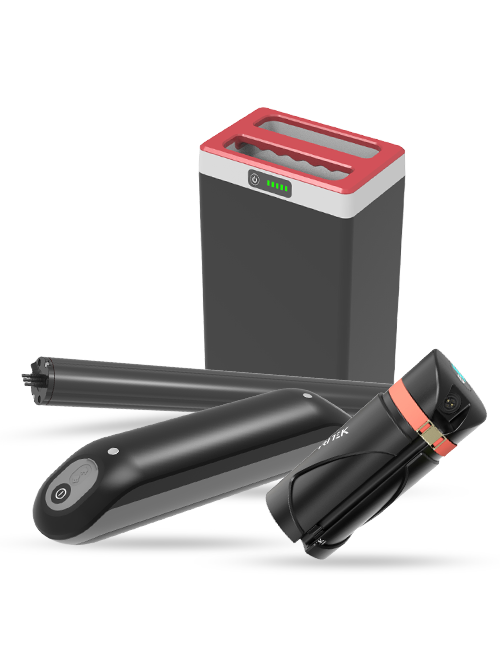Lithium-ion batteries, a type of lithium battery, have revolutionized the way we power our devices, from smartphones to electric vehicles. Understanding the different types of lithium-ion batteries is crucial for optimizing performance and selecting the right power source for various applications.
In this article, we’ll explore the six main types of lithium-ion batteries: LCO, LMO, LTO, NCM, NCA, and LFP, delving into their composition, characteristics, advantages, disadvantages, and applications.
LCO (Lithium Cobalt Oxide) Batteries
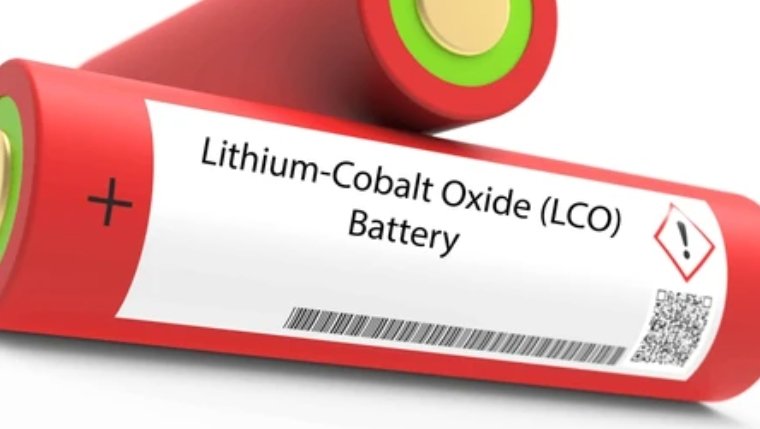
Composition and Structure: LCO (Lithium Cobalt Oxide) Batteries, also known as lithium cobalt oxide batteries, utilize lithium cobalt oxide(LiCoO2) as the cathode material and typically have a graphite carbon anode.
Voltage: Nominal voltage 3.7V, operating voltage range between 3.0-4.2V.
Energy Density: Typically ranging from 150-200Wh/kg, depending on the specific formulation and manufacturing process.
Charge (C-rate): Typically ranging from 0.5C to 2C.
Discharge (C-rate): Typically ranging from 0.5C to 5C, depending on the specific application and battery design.
Cycle Life: Typically ranges from 300-500 cycles under standard operating conditions. However, with optimized charging protocols, temperature management, and high-quality materials, some LCO batteries can achieve over 1000 cycles.
Advantages:
- High specific energy density
- Suitable for compact devices
- Widely used in consumer electronics
Disadvantages:
- Limited cycle life
- Vulnerable to thermal runaway under certain conditions
Applications: LCO batteries are commonly found in smartphones, tablets, laptops, cameras, and other portable electronic devices.
In summary, LCO batteries offer high energy density, versatile charging and discharging capabilities, and good cycle life, making them well-suited for a wide range of applications, including smartphones, laptops, and other portable electronic devices. However, careful consideration of charging protocols, thermal management, and safety measures is essential to ensure optimal performance and safety.
LMO (Lithium Manganese Oxide) Batteries
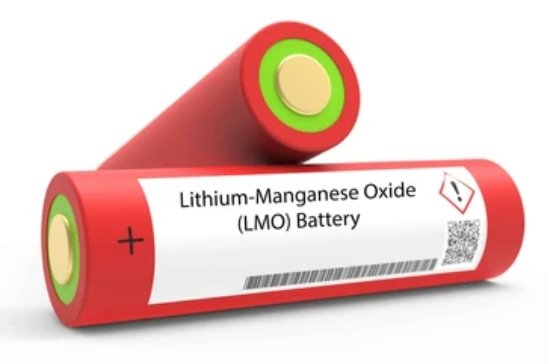
Composition and Structure: LMO batteries typically utilize lithium manganese oxide(LiMn2O4) as the cathode material and commonly have a graphite carbon anode.
Voltage: Nominal voltage 3.7V, operating voltage ranges between 2.5-4.2V.
Energy Density: Typically ranging from 100-150Wh/kg, depending on the specific formulation and manufacturing process.
Charge (C-rate): Typically ranging from 0.5C to 2C.
Discharge (C-rate): Typically ranging from 0.5C to 3C, depending on the specific application and battery design.
Cycle Life: Typically ranges from 500 to 1000 cycles under standard operating conditions. However, with optimized charging protocols, temperature management, and high-quality materials, some LMO batteries can achieve over 1000 cycles.
Advantages:
- Good thermal stability
- Enhanced safety performance
- Suitable for applications requiring long battery life
Disadvantages:
- Lower energy density compared to some other lithium-ion batteries
- Limited high-rate discharge capability
Applications: LMO batteries are commonly used in applications such as power tools, electric bicycles, and medical devices, where safety, reliability, and long cycle life are critical factors.
In summary, LMO batteries offer moderate energy density, good thermal stability, and safety performance, making them suitable for various applications where long cycle life and reliability are essential. However, their lower energy density and limited high-rate discharge capability may restrict their use in high-performance applications such as electric vehicles.
LTO (Lithium Titanate) Batteries
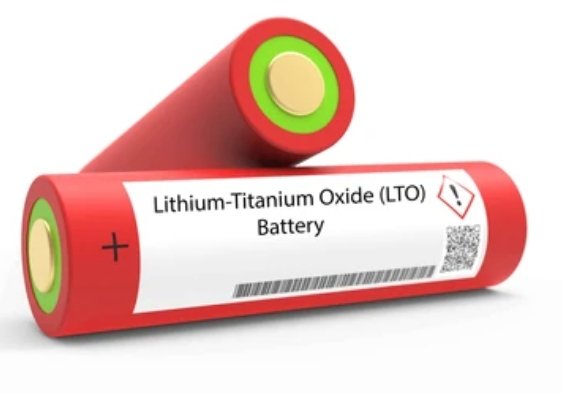
Composition and Structure: LTO batteries feature a lithium titanate (Li4Ti5O12) anode material, typically paired with a lithium manganese oxide (LiMn2O4) or lithium iron phosphate (LiFePO4) cathode. In LTO batteries, lithium ions move between the anode and cathode during charging and discharging, similar to other lithium-ion batteries.
Voltage: Nominal voltage 2.4V, operating voltage range between 1.5-2.8V.
Energy Density: Typically ranging from 80-120Wh/kg, depending on the specific formulation and manufacturing process.
Charge (C-rate): LTO batteries can be charged at various rates, typically ranging from 0.5C to 5C.
Discharge (C-rate): Similarly, LTO batteries can be discharged at various rates, typically ranging from 0.5C to 10C, depending on the specific application and battery design.
Cycle Life: The cycle life of LTO batteries is exceptionally high, typically ranging from 6000-10000 cycles under standard operating conditions. This remarkable cycle life is attributed to the robust lithium titanate anode material, which exhibits excellent stability and reversibility during charge-discharge cycles.
Advantages:
- Exceptionally long cycle life
- Rapid charging capability
- Excellent thermal stability and safety performance
Disadvantages:
- Lower energy density compared to some other lithium-ion battery types
- Higher cost compared to conventional lithium-ion batteries
Applications: LTO batteries are commonly used in applications where long cycle life, rapid charging, and safety are paramount, such as electric cars and buses, energy storage systems, and grid-scale applications. They are also used in hybrid electric vehicles (HEVs) and stationary backup power systems.
In summary, LTO batteries offer an unmatched cycle life, rapid charging capability, and excellent safety performance, making them ideal for applications requiring long-term reliability and durability. However, their lower energy density and higher cost may limit their use in some high-energy-density applications.
NCA (Lithium Nickel Cobalt Aluminum Oxide) Batteries
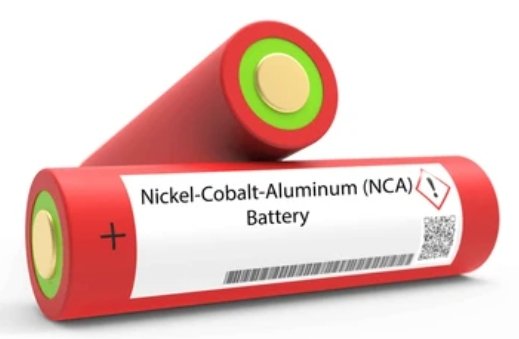
Composition and Structure: NCA batteries feature a cathode material composed of nickel, cobalt, and aluminum, typically in the form of layered oxides. The anode material is usually graphite.
Voltage: Nominal voltage typically around 3.6-4.0V, operating voltage range between 3.0-4.2V.
Energy Density: NCA batteries offer a high energy density, typically ranging from 200-250Wh/kg, depending on the specific formulation and manufacturing process. This high energy density makes NCA batteries well-suited for applications requiring compact and lightweight power sources.
Charge (C-rate): NCA batteries can be charged at various rates, typically ranging from 0.5C to 3C.
Discharge (C-rate): Similarly, NCA batteries can be discharged at various rates, typically ranging from 0.5C to 5C, depending on the specific application and battery design.
Cycle Life: The cycle life of NCA batteries typically ranges from 500 to 1000 charge-discharge cycles under standard operating conditions. However, with optimized charging protocols, temperature management, and high-quality materials, some NCA batteries can achieve over 1000 cycles.
Advantages:
- High specific energy density
- Good performance at high temperatures
- Suitable for high-power applications
Disadvantages:
- Limited availability of cobalt may affect cost and supply chain
- Lower thermal stability compared to some other lithium-ion chemistries
Applications: Commonly used in applications where high energy density, high power output, and lightweight design are critical factors, such as (light) electric vehicles, aerospace applications, and high-performance portable electronics.
In summary, NCA batteries offer a high energy density, excellent performance at high temperatures, and suitability for high-power applications, making them ideal for a wide range of applications where compact and lightweight power sources are required. However, their higher cost and lower thermal stability compared to some other lithium-ion chemistries may impact their use in certain applications.
NMC (Lithium Nickel Manganese Cobalt Oxide) Batteries
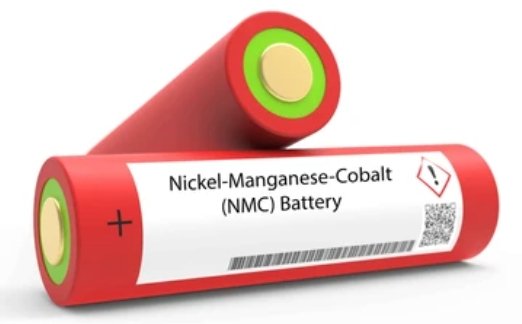
Composition and Structure: NCM batteries utilize a cathode material composed of nickel, cobalt, and manganese in various ratios, typically in the form of layered oxides. The anode material is usually graphite.
Voltage: Nominal voltage typically around 3.6-3.8V, operating voltage range between 3.0-4.2V.
Energy Density: NCM batteries offer a high energy density, typically ranging from 150-200Wh/kg, depending on the specific formulation and manufacturing process. This high energy density makes NCM batteries well-suited for applications requiring compact and lightweight power sources.
Charge (C-rate): NCM batteries can be charged at various rates, typically ranging from 0.5C to 3C.
Discharge (C-rate): Similarly, NCM batteries can be discharged at various rates, typically ranging from 0.5C to 5C, depending on the specific application and battery design.
Cycle Life: The cycle life of NCM batteries typically ranges from 500 to 1000 charge-discharge cycles under standard operating conditions. However, with optimized charging protocols, temperature management, and high-quality materials, some NCM batteries can achieve over 1000 cycles.
Advantages:
- High specific energy density
- Good performance at high temperatures
- Enhanced safety performance compared to some other lithium-ion chemistries
Disadvantages:
- Costlier compared to some other lithium-ion chemistries
- Limited availability of cobalt may affect cost and supply chain
Applications: NCM batteries are commonly used in applications where high energy density, high power output, and lightweight design are critical factors, such as (light) electric vehicles, energy storage systems, and portable electronics.
In summary, NCM batteries offer a high energy density, good performance at high temperatures, and enhanced safety performance, making them ideal for a wide range of applications where compact and lightweight power sources are required. However, their higher cost and limited availability of cobalt may impact their use in certain applications.
LFP (Lithium Iron Phosphate) Batteries
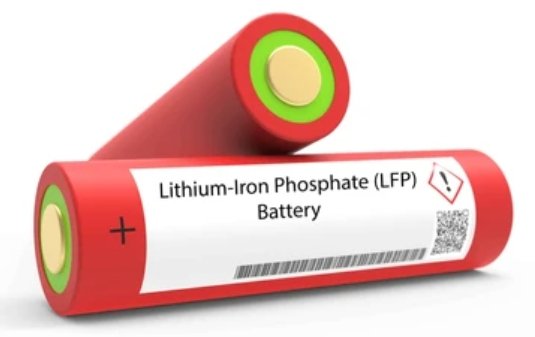
Composition and Structure: LFP (Lithium Iron Phosphate) Batteries, a type of rechargeable lithium batteries, feature a cathode material composed of lithium iron phosphate (LiFePO4), typically paired with a graphite carbon anode.
Voltage: Nominal voltage typically around 3.2-3.3V, operating voltage range between 2.5-3.6V.
Energy Density: LFP batteries offer a moderate energy density, typically ranging from 90-160Wh/kg, depending on the specific formulation and manufacturing process.
Charge (C-rate): LFP batteries can be charged at various rates, typically ranging from 0.5C to 3C.
Discharge (C-rate): Similarly, LFP batteries can be discharged at various rates, typically ranging from 0.5C to 5C, depending on the specific application and battery design.
Cycle Life: The cycle life of LFP batteries is exceptionally high, typically ranging from 2000 to 5000 charge-discharge cycles under standard operating conditions. This remarkable cycle life is attributed to the stable structure of lithium iron phosphate, which exhibits excellent stability and reversibility during charge-discharge cycles.
Advantages:
- Enhanced safety performance: LFP batteries are less prone to thermal runaway and combustion compared to some other lithium-ion chemistries.
- Long cycle life: LFP batteries can withstand thousands of charge-discharge cycles, making them suitable for long-term use in various applications.
- Excellent thermal stability: LFP batteries exhibit good performance over a wide temperature range, making them suitable for use in extreme environments.
Disadvantages:
- Lower energy density compared to some other lithium-ion chemistries, which may limit their use in applications requiring high energy density.
- Limited high-rate discharge capability compared to some other lithium-ion chemistries, which may impact their use in high-power applications.
Applications: LFP batteries are commonly used in applications where safety, long cycle life, and thermal stability are critical factors, such as electric buses, stationary energy storage systems, and backup power systems. They are also used in applications such as power tools and medical devices, where reliability and safety are paramount.
In summary, LFP batteries offer excellent safety performance, long cycle life, and thermal stability, making them ideal for a wide range of applications where safety and reliability are essential. However, their lower energy density and limited high-rate discharge capability may restrict their use in some high-power applications.
Overview of the comparison
| Battery Type | Lifespan | Specific Energy | Specific Power | Thermal Stability | Cost |
|---|---|---|---|---|---|
| LCO (Lithium Cobalt Oxide) | Moderate (300-500 cycles) | High (150-200 Wh/kg) | Moderate | Vulnerable to thermal runaway | Moderate |
| LMO (Lithium Manganese Oxide) | Moderate to High (500-1000 cycles) | Moderate (100-150 Wh/kg) | Moderate | Good | Moderate |
| LTO (Lithium Titanate) | Exceptionally High (6000-10000 cycles) | Low to Moderate (80-120 Wh/kg) | High | Excellent | High |
| NCA (Lithium Nickel Cobalt Aluminum Oxide) | Moderate (500-1000 cycles) | High (200-250 Wh/kg) | High | Moderate | High |
| NMC (Lithium Nickel Manganese Cobalt Oxide) | Moderate (500-1000 cycles) | High (150-200 Wh/kg) | High | Moderate | High |
| LFP (Lithium Iron Phosphate) | High (2000-5000 cycles) | Moderate (90-160 Wh/kg) | Moderate | Excellent | Moderate |
Conclusion
In conclusion, the landscape of lithium-ion batteries is vast and diverse, offering a multitude of options tailored to specific applications and requirements. From the high energy density of LCO batteries to the exceptional cycle life of LTO batteries, each type brings its own set of advantages and disadvantages to the table.
Lithium-ion batteries have transformed industries ranging from consumer electronics to transportation, enabling the proliferation of electric vehicles and revolutionizing the way we power our devices. Understanding the unique characteristics of each lithium-ion battery type is crucial for selecting the optimal power source for a given application, considering factors such as energy density, cycle life, thermal stability, and safety performance.
While some batteries excel in high-power applications like electric vehicles, others find their niche in portable electronics or stationary energy storage systems. As technology in the lithium-ion battery industry continues to evolve, advancements in battery chemistry and manufacturing processes promise even greater performance, reliability, and safety across the board.
Ultimately, the choice of lithium-ion battery depends on the specific requirements of the application, balancing factors such as energy density, cycle life, cost, and safety. By staying informed about the latest developments in lithium-ion battery technology and understanding the strengths and limitations of each type, businesses and consumers alike can make informed decisions to power the innovations of tomorrow.
Read more:


